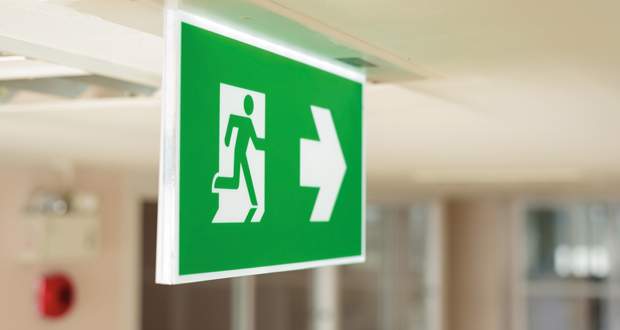Stuart Purton, UK Lead for Training and Onboarding at Chubb Fire & Security on why the new Fire Safety Act 2021 which came into force in May, offers clearer directions on meeting compliance.
The Grenfell Tower tragedy in 2017 and the subsequent inquiry highlighted the need for changes to the Regulatory Reform (Fire Safety) Order 2005. Sadly, it is only when events like this happen that legislation changes.
The new Fire Safety Act 2021, which came into force in May 2022, amends the previous legislation and better defines the line between compliant and non-compliant. The responsibility for fire safety sits with the person in control of the premises, and they will expect their FM to help them protect their people and assets.
To comply, a responsible person must provide evidence that they have taken sound advice and acted upon it when carrying out fire risk assessments. Conversely, being unable to
produce evidence would be deemed non-
compliant with the legislation. Therefore, the responsible person would have no defence against prosecution.
As well as a clearer understanding of compliance, the Act makes two amendments specific to buildings containing two or more flats with communal areas. Firstly, it clarifies that the reference to communal areas includes the external walls, windows, doors, balconies, and anything else attached to the exterior of the building. Secondly, it clarifies that the front door of flats should be considered part of the communal area.
Fire risk assessments
While FMs are experts in managing buildings for their customers, they are not necessarily experts in carrying out fire risk assessments or external structural checks. In this instance, FMs who manage residential properties should ensure that they take advice on these additional elements.
Qualified fire risk assessors can provide guidance relating to the communal areas, while advice on the structural components and building materials may need to come from a specialist in this area, such as a structural engineer. The structural advice is most relevant for buildings over 18 metres tall (seven storeys), particularly when the Fire Safety (England) Regulations 2022 are enacted in January 2023.
The fire risk assessors at Chubb generally have senior fire brigade or MOD backgrounds and are all experts who understand how fire propagates around a building. They check physical fire detection systems such as fire alarms, fire safety equipment, signage, and lighting. Other aspects of the assessment will be structural, assessing the quality of compartmentalisation to prevent fires from spreading. The fire risk assessments will also look at procedural elements and determine whether there is a fire plan in place, whether the evacuation procedure is effective, whether there is adequate training for personnel, and if these aspects are documented. Other services are available, including one that looks specifically at Fire Doors Inspection that provides a detailed review of each door.
Keeping information secure
In domestic blocks over 18m high, the new legislation states that this information should be kept in a secure information box accessible to the fire and rescue services. The information box should contain the name, address, and contact details of the responsible person and anyone else who can provide appropriate access to the premises.
The information box must be inspected and maintained by the responsible person at least annually. Essential fire safety equipment such as alarms and fire evacuation systems should be checked monthly to ensure they are in good working order.
There are further recommendations about fire door inspections in blocks over 11m high. Front doors of flats should be inspected annually, while internal fire doors should be checked more frequently, at least quarterly. In all domestic blocks with a communal area of any height, residents should be provided with information about their fire doors and the safe evacuation of the building.
Ensuring compliance
Many of the FM companies we work with have already adapted their requirements to manage these changes, and I expect many others out there to do this too. But the overarching message is that everyone is on the same page regarding fire safety compliance. FMs will be able to produce the documentation tenants need, provide evidence when required to show compliance, and demonstrate to their clients that they have experts carrying out fire risk assessment work to ensure their buildings are safe. Along with compliance and building trust with their clients, FMs can also benefit from reduced call-outs and false alarms, meaning reduced costs.
As UK Lead for Training and Onboarding, I recently created an online training module for our employees so they can provide expert advice to their customers about the new Act. I believe our team must understand where new legislation has come from, communicate it clearly and simply to our customers, and provide the best advice and guidance to protect them.
The amendment to the legislation aims to make buildings safe for people to work and live. Organisations now have a much clearer picture of what is required by law to demonstrate fire safety compliance.





